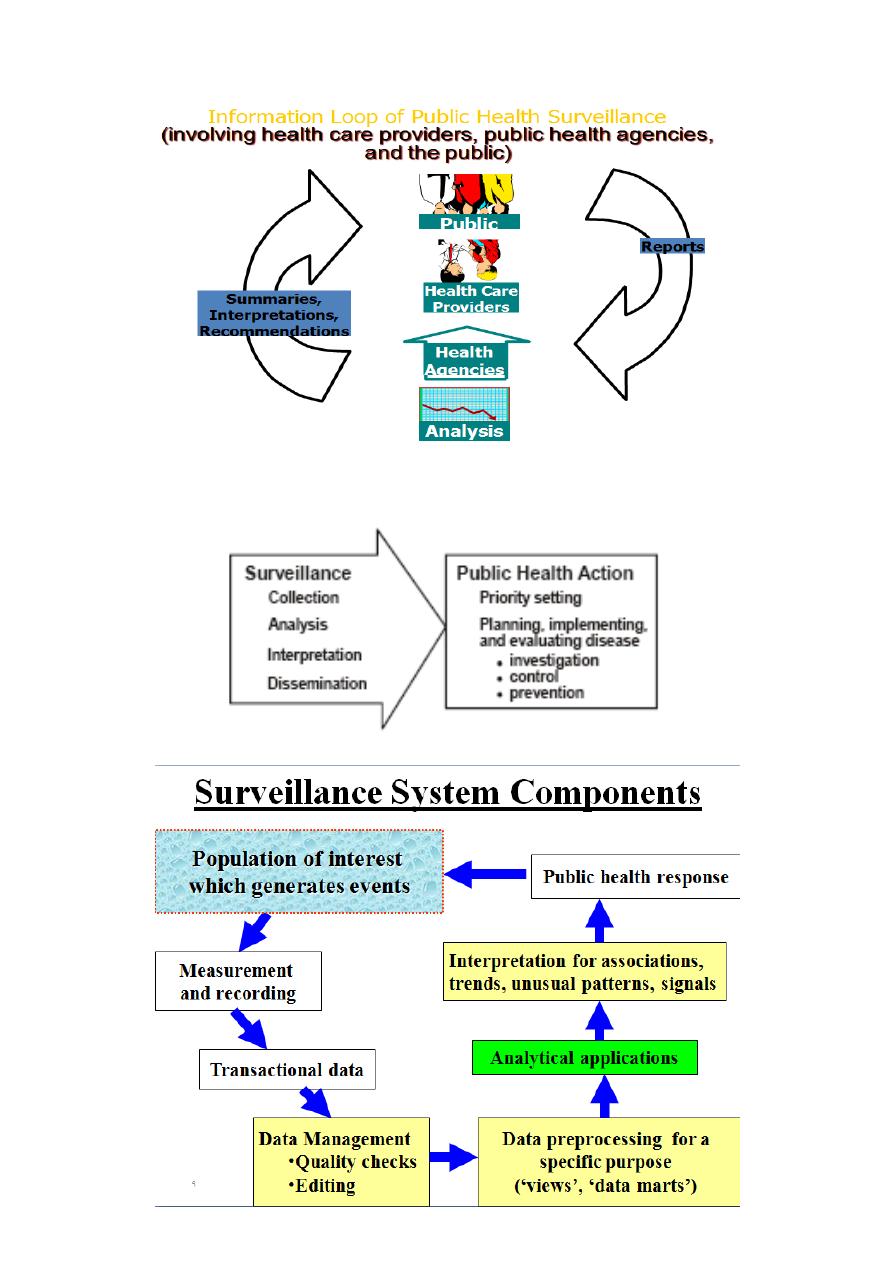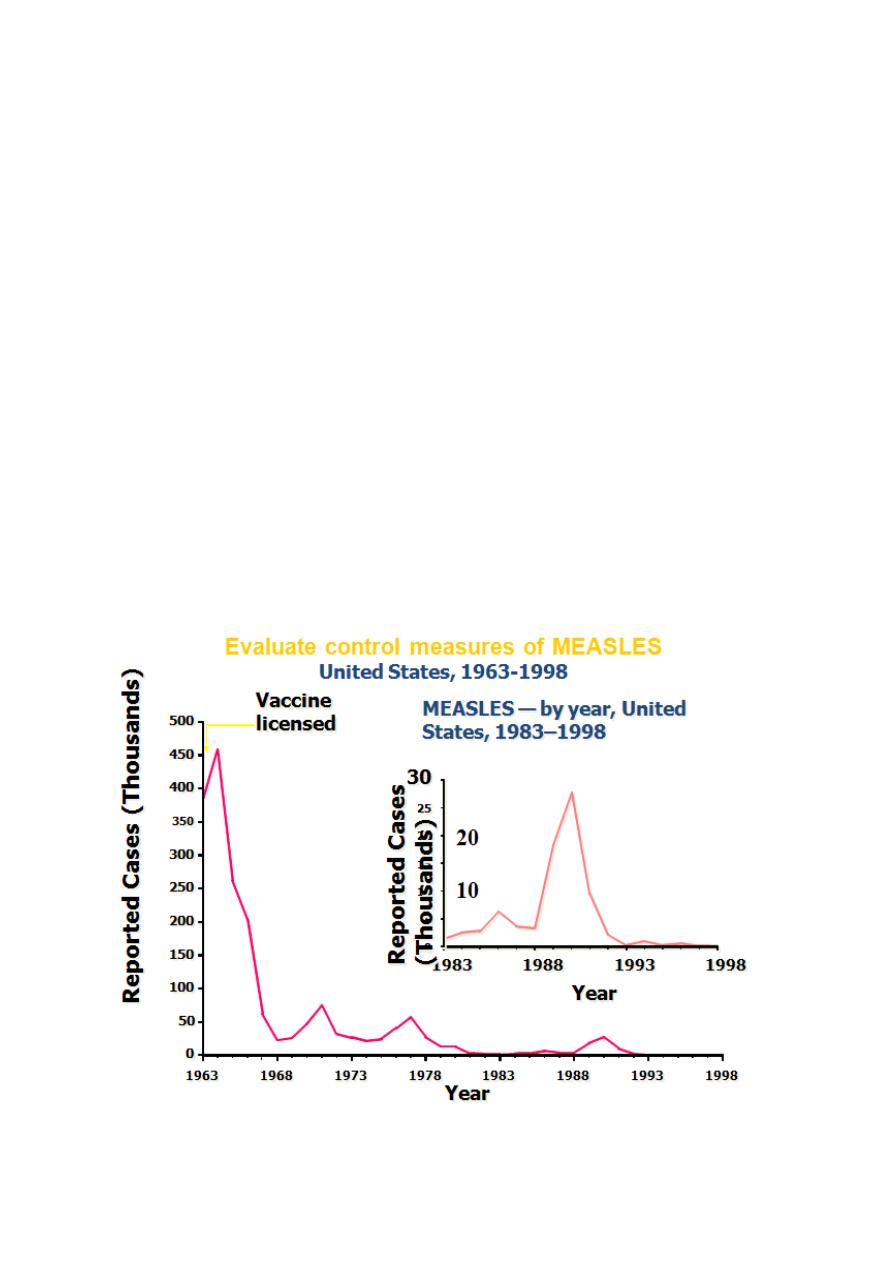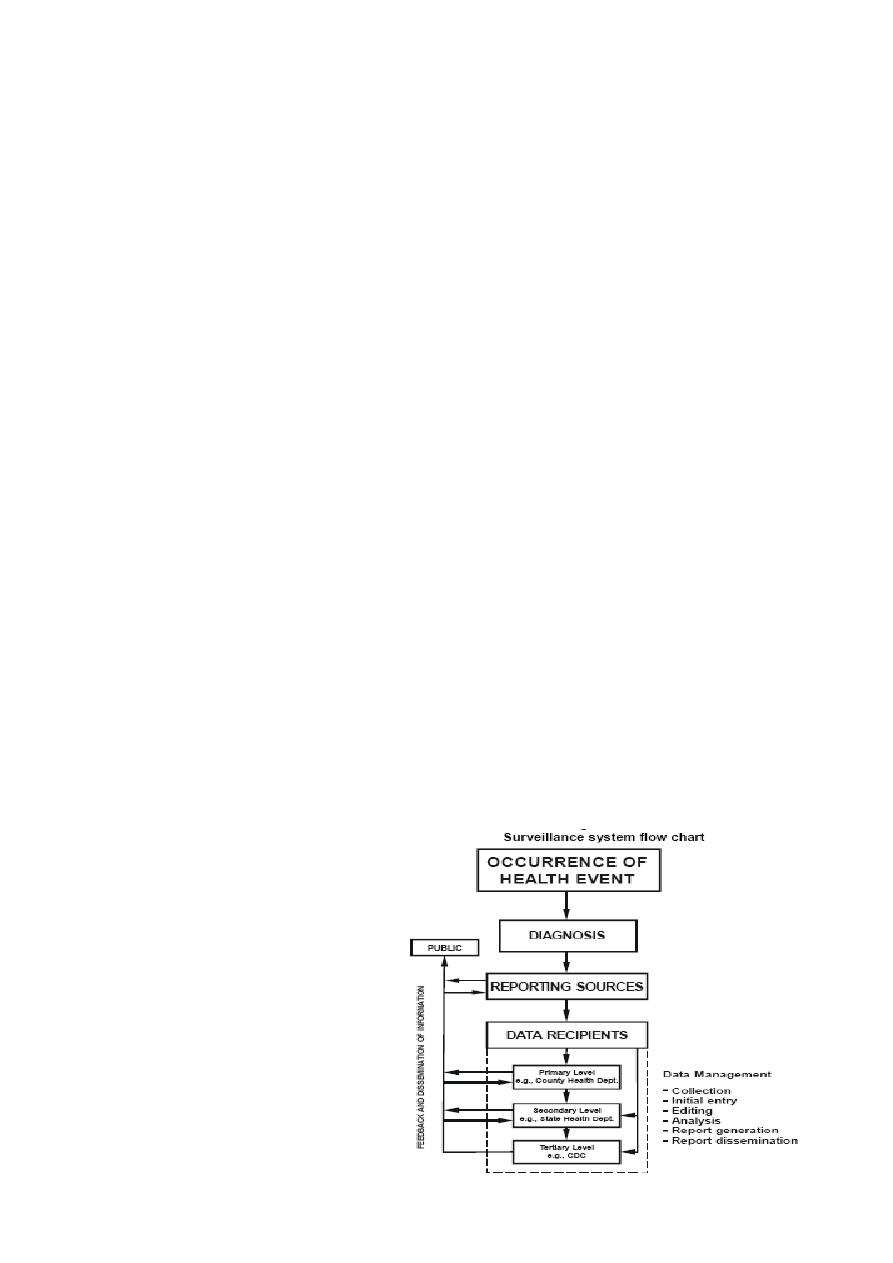
Dr.Suhayla
Public Health Surveillance
Objectives
After studying this lesson you will be able to:
• Define public health surveillance and its main components (activities)
• List the main uses of surveillance data
• Describe sources for data that can be used for public health surveillance
• Describe the flow of information for reportable diseases
Public Health Surveillance
Ongoing, systematic collection, analysis, and interpretation of health-related
data essential to the planning, implementation, and evaluation of public
health practice,
with the timely dissemination of these data to those responsible for
prevention and control.
Essential activities of surveillance
1.Identify; define and measure the health problem of interest;
2.Collect and compile data about the problem (and if possible, factors that
influence it)
3.Analyze and interpret these data
4.Provide these data and their interpretation to those responsible for
controlling the health problem and
5.Monitor and periodically evaluate the usefulness and quality of surveillance
to improve it for future use.
N.B
surveillance of a problem does not include actions to control the problem.

Surveillance is >> Information for Action
The components of surveillance and resulting public health action

Purposes of Public Health Surveillance
Public health surveillance provides and interprets data to facilitate the
prevention and control of disease.
Uses of Public Health Surveillance
1.Assess and monitor public health problems
2.Estimate magnitude of the problem
3.Useful in setting priorities to facilitate planning
4.Portray the natural history of a disease
5.Detect epidemics/define a problem
6.Generate hypotheses, stimulate research
7.Evaluate programs, control measures
8.Detect changes in health practices & services

Identifying Health Problems for Surveillance
Selecting a Health Problem for Surveillance:
*Conducting surveillance for a health problem consumes time and resources.
*It is important to select and prioritizing health problems for surveillance
Criteria for selecting and prioritizing health problems for surveillance
*Public health importance of the problem:
1.incidence, prevalence,
2.severity, sequela, disabilities,
3.mortality caused by the problem,
4.socioeconomic impact,
5.communicability,
6.potential for an outbreak,
7.public perception and concern, and
8.international requirements.
*Ability to prevent, control, or treat the health problem:
preventability and Availability of control measures and treatment.
*Capacity of health system to implement control measures for the health
problem:
Immediate response
availability of resource
Sources and Methods for Gathering Data
Three main sources:
1.Individual Persons
2.Health-care providers, facilities, and records

-Physician offices
-Hospitals
-utpatient departments
-Emergency departments
-Inpatient settings
-Laboratories
3.Environmental conditions
-Air
-Water
-Animal vectors
Methods used to collect the health-related data
1.Environmental monitoring
2.Surveys
3.Notifications
4.Registries.
Surveys
Surveys, uses a “structured and systematic gathering of information” from a
sample of “a population of interest to describe the population in quantitative
terms.”
Notification
*A notification is the reporting of certain diseases or other health-related
conditions by a specific group, as specified by law, regulation, or agreement.
*Notifications are typically made to the state or local health agency.

Registries
Reregistery is a method for documenting or tracking events or persons over
time.
Examples:
Registries of vital events (birth and death certificates) are required by law
and contain important health-related information.
A disease registry (e.g., a cancer registry) tracks a person with disease over
time and usually includes diagnostic, treatment, and outcome information.
Surveillance data usually collected are:
1.Vital events, births, deaths, marriages, divorce,...
2.Morbidity data; infections diseases, non-communicable diseases, birth
defects, injuries,...
3.Mortality data
Analyzing and Interpreting Data
#Analyzing by time
#Analyzing by place
#Analyzing by person
Interpreting results of analyses
*Observed increases or decreases in disease incidence or prevalence might
be an artifact.
*Common causes of artifactual (not true) change in disease occurrence are:
Changes in local reporting procedures or policies (e.g., a change from passive
to active surveillance).
Changes in case definition (e.g., AIDS in 1993).
Increased health-seeking behavior (e.g., media publicity prompts
persons with symptoms to seek medical care).

Increase in diagnosis.
New laboratory test or diagnostic procedure.
Increased physician awareness of the condition, or a new physician is in
town.
Increase in reporting (i.e., improved awareness of reporting).
Outbreak of similar disease, misdiagnosed as disease of interest.
Laboratory error.
Disseminating Data and Interpretations
Data and interpretations should be sent to:
those who provided reports or other data (e.g., health-care providers
and laboratory directors).
They should also be sent to those who use them for
*planning or
*managing control programs,
*Administrative purposes,
*or other health-related decision-making.
Types of Surveillance
1.Passive (Routine reporting system)
Hospitals, health centers, health
facilities.
Reporting is governed by existing local rules.
Advantages:
Inexpensive.
Standardized.
Good for monitoring large numbers of typical health events

Disadvantages:
Under-reporting is a problem
Incomplete data
Busy doctors & nurses
2-Active (Sentinel reporting system):
Collection of data on a specific disease for a relatively limited period of
time.
By selected health units, certain physicians,…
Advantages:
More consistent pictures.
Motivated.
Disadvantages:
Not representative
Active surveillance is relatively expensive practice.
It is usually limited to disease elimination programs and to short-term
intensive investigation and control activities, or to seasonal problems, (e.g.
Influenza, arboviruses).
By: Sama Adeeb
